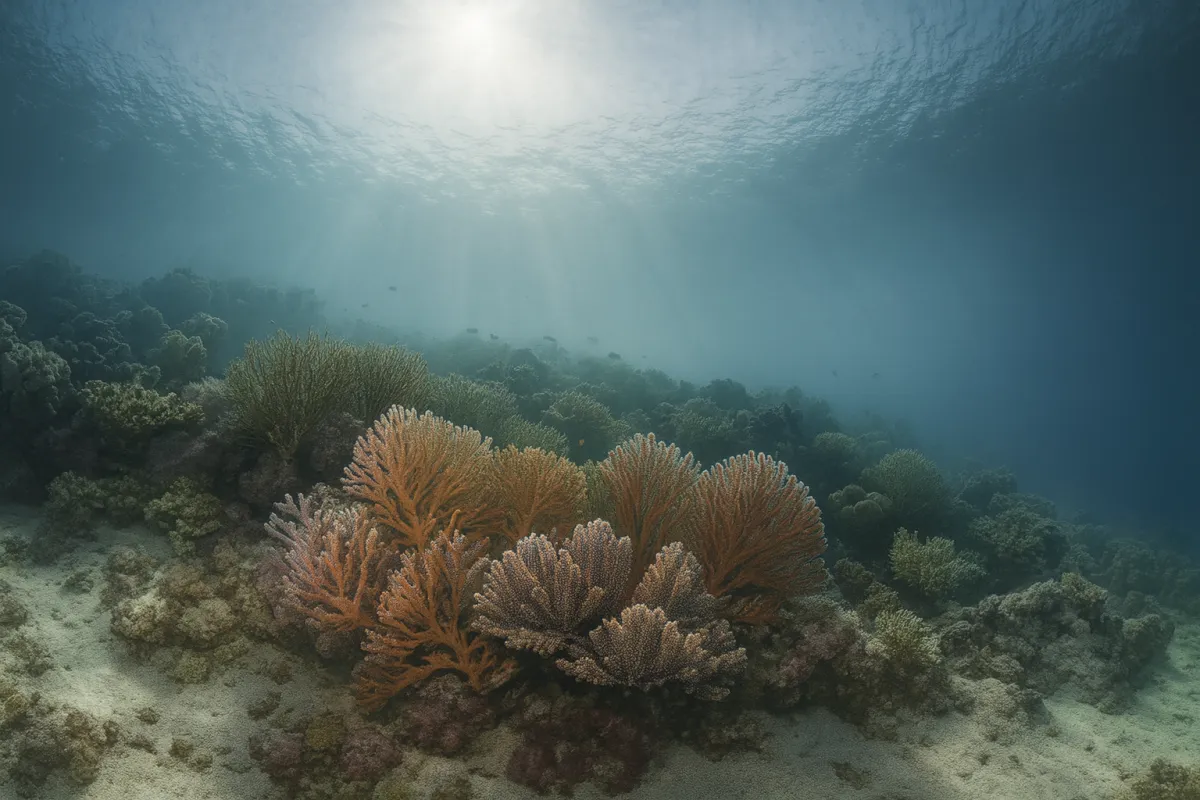
The Architecture of Coral Reefs
Beneath the waves lie cities of color and motion. Coral reefs, built grain by grain by creatures no bigger than a pinhead, stretch for miles across tropical seas. They are nurseries, fortresses, and marketplaces of the ocean—teeming with fish, invertebrates, and plants. To understand a reef is to witness how life builds with patience, resilience, and artistry.
The Builders: Coral Polyps
At the heart of every reef is the coral polyp, a soft-bodied animal related to jellyfish. Each polyp secretes calcium carbonate, forming a tiny limestone skeleton. Over centuries, billions of these skeletons accumulate, creating vast limestone frameworks—foundations strong enough to be seen from space.
Reproduction: A Dual Strategy
Corals grow in two ways. Through budding, asexual reproduction, new polyps emerge from parents and stay attached, expanding the colony. Once a year, many species also engage in mass spawning, releasing eggs and sperm into the sea, synchronized with moonlight and temperature. Fertilized larvae drift, settle, and begin new colonies—an ocean-wide celebration of renewal.
The Symbiosis That Fuels the Reef
Corals are not alone in their labor. Inside their tissues live microscopic algae called zooxanthellae. These algae photosynthesize, providing corals with energy; in return, the coral provides shelter and sunlight access. This partnership drives the dazzling productivity of reefs, allowing them to flourish in nutrient-poor waters.
Forms and Structures
Fringing reefs hug coastlines.
Barrier reefs lie offshore, separated by lagoons.
Atolls form perfect rings around sunken volcanic islands.
Each type is an architectural marvel, supporting an immense diversity of life—from schooling fish to sea turtles, sharks, and sponges.
Growth and Breakdown
Reefs grow, but they also erode. Waves pound their edges. Parrotfish bite chunks of coral as they graze. Sea urchins scrape skeletons clean. This bioerosion breaks down structures into sand, recycling calcium carbonate. Creation and destruction exist in balance, sculpting reefs over time.
Fragile Giants
Though mighty in scale, reefs are vulnerable. Rising seas and warming waters trigger coral bleaching, where stressed corals expel their algae partners, leaving skeletons bare. Ocean acidification weakens their skeletons, pollution smothers them, and overfishing unravels the food webs they support.
Why They Matter
Covering less than 1% of the ocean floor, reefs support about 25% of all marine species. They protect coasts from storms, provide food and livelihoods for millions, and inspire awe in anyone who has swum among their colors. Protecting reefs is not only about preserving beauty—it is about safeguarding the heartbeat of the tropics.
Coral reefs remind us that strength can come from cooperation: tiny polyps, algae, fish, and currents working in unison to create life’s great underwater metropolises.
🪸 The Architecture of Coral Reefs — Sources
Spalding, M. D. et al. (2001). World Atlas of Coral Reefs.
Veron, J. E. N. (2000). Corals of the World.
NOAA Coral Reef Conservation Program. What are coral reefs?
Hughes, T. P. et al. (2003). Climate change, human impacts, and the resilience of coral reefs.
Encyclopedia of Earth. Coral Reef Ecosystems.